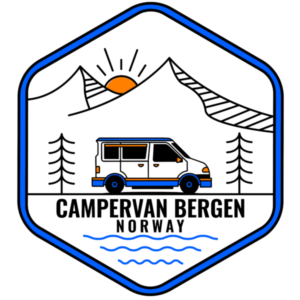The Weather in Norway During the Summer
What to wear in Hiking or travelling with a campervan.
When it comes to summer in Norway, the country offers a unique and diverse climate that can vary greatly depending on the region. From the warm coastal areas to the cooler mountainous regions, Norway has something to offer for everyone seeking a summer getaway.
Coastal Areas
The coastal areas of Norway experience a relatively mild and pleasant summer climate. With the influence of the Gulf Stream, temperatures can reach an average high of 20-25 degrees Celsius (68-77 degrees Fahrenheit). The coastal regions also benefit from longer daylight hours, with the phenomenon known as the Midnight Sun occurring in the northernmost parts of the country. This means that during the summer months, the sun can be visible 24 hours a day, creating a unique and magical experience.
Inland Areas
Inland areas of Norway, particularly in the central and northern parts of the country, have a cooler summer climate compared to the coastal regions. Temperatures in these areas can range from 15-20 degrees Celsius (59-68 degrees Fahrenheit) on average. However, it is worth noting that temperatures can vary greatly from day to day, and even within a single day. It is not uncommon to experience cooler temperatures in the morning and evening, with warmer temperatures during the midday hours.
Mountainous Regions
Norway is known for its stunning mountainous landscapes, and these regions offer a completely different summer experience. As you ascend into higher altitudes, temperatures can drop significantly, even during the summer months. It is not uncommon to experience temperatures as low as 5-10 degrees Celsius (41-50 degrees Fahrenheit) in the mountains. However, the mountainous regions provide a unique opportunity for outdoor activities such as hiking, skiing, and exploring the breathtaking scenery.
Rainfall
Rainfall is a common occurrence in Norway, even during the summer months. The coastal areas tend to receive more rainfall compared to the inland and mountainous regions. It is advisable to pack appropriate rain gear and be prepared for sudden changes in weather conditions. However, the rainfall also contributes to the lush green landscapes and vibrant flora that Norway is known for.
What to Pack
When planning a trip to Norway during the summer, it is important to pack a variety of clothing to accommodate the changing weather conditions. It is recommended to bring layers, including lightweight and breathable clothing for warmer days, as well as warmer layers for cooler temperatures. Don’t forget to pack a waterproof jacket and sturdy footwear for outdoor activities.
Activities and Attractions
Despite the varying weather conditions, Norway offers a wide range of activities and attractions during the summer months. From exploring the picturesque fjords and charming coastal towns to hiking in the mountains and experiencing the vibrant cultural festivals, there is something for everyone to enjoy. The long daylight hours also provide ample time for outdoor activities and sightseeing.
In conclusion, the weather in Norway during the summer can vary greatly depending on the region. While the coastal areas enjoy milder temperatures and longer daylight hours, the inland and mountainous regions offer a cooler and more diverse climate. Regardless of the weather, Norway’s natural beauty and unique attractions make it an ideal destination for a summer getaway.
When hiking and traveling with a campervan in Norway, it’s important to be prepared for various weather conditions, as the weather can change quickly, especially in mountainous areas. Here are some clothing items you should consider packing:
- Base Layers: Start with moisture-wicking base layers to keep you dry and comfortable. Merino wool or synthetic materials are great options.
- Insulating Layers: Pack fleece jackets or down jackets to provide warmth when temperatures drop, especially in the evenings or at higher altitudes.
- Waterproof Outer Layers: Bring a waterproof and windproof jacket and pants to protect against rain, wind, and potential snow. Gore-Tex or similar materials are ideal.
- Hiking Pants: Opt for quick-drying and durable hiking pants that provide mobility and protection. Convertible pants are versatile for changing weather conditions.
- Hiking Boots: Invest in sturdy and waterproof hiking boots with good traction. They’ll provide support and stability on uneven terrain.
- Socks: Pack moisture-wicking socks to prevent blisters and keep your feet dry. Consider bringing a few pairs of varying thickness.
- Hats and Gloves: Bring a warm beanie or hat to retain heat, especially at higher elevations. Gloves or mittens are essential for keeping your hands warm, especially during chilly mornings or while hiking.
- Sunglasses and Sunscreen: Protect your eyes and skin from the sun’s UV rays, even in cloudy conditions. Polarized sunglasses are particularly useful to reduce glare, especially around snow or water.
- Buff or Neck Gaiter: This versatile accessory can be used as a scarf, face mask, headband, or hat, providing additional warmth and protection from the elements.
- Daypack: Carry a lightweight and comfortable daypack to store essentials such as water, snacks, a map, compass, first aid kit, and extra layers.
- Swimwear: Don’t forget to pack swimwear, as Norway has beautiful fjords, lakes, and coastal areas where you might want to take a refreshing dip.
- Casual Clothing: Bring comfortable and breathable clothing for relaxing in the campervan or exploring towns and cities.
Remember to check the weather forecast before your trip and adjust your packing list accordingly. It’s better to be over-prepared than under-prepared, especially when exploring the wilderness of Norway.

